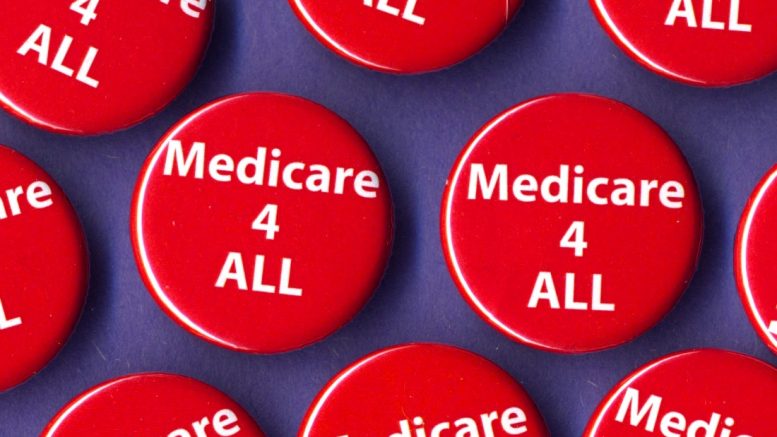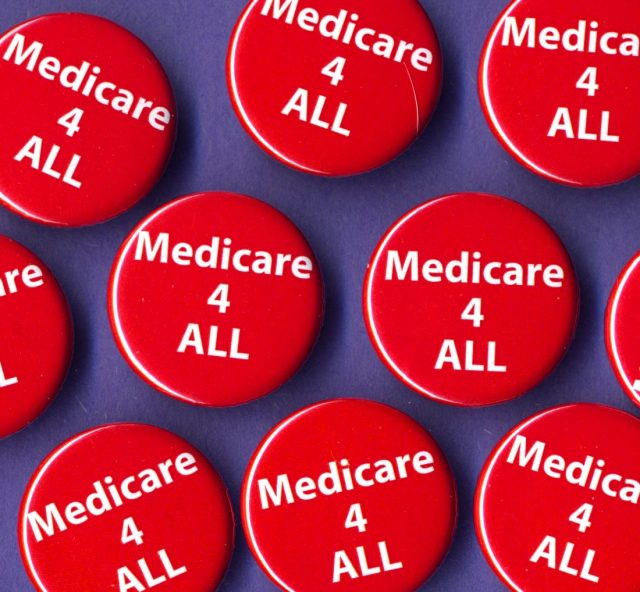By
As the 2019 legislative session in Congress kicks off, the Democratic majority in the House will, in very short order, have to address a national surge of support for Medicare for All (otherwise known as single-payer healthcare). At the close of the last Congress, almost two-thirds of Democratic Representatives had signed onto HR 676, the Expanded & Improved Medicare for All Act. They will be joined by the long list of freshman Democrats who ran and won on this issue.
Leading the charge in the House will be Rep. Pramila Jayapal (D-Wash.), who is assuming lead sponsorship of the Medicare for All bill after Keith Ellison stepped down to run for Attorney General of Minnesota. Jayapal got her start in the immigrant rights and civil rights movements, and has extensive ties to the social justice and labor movements in Washington State.
Her willingness to take the lead on the Medicare for All Act will come as no surprise: last year she helped to launch the first Medicare for All Caucus in the history of Congress, and, as Co-Chair of the Congressional Progressive Caucus, is helping to prioritize the CPC’s work on single-payer healthcare. She brings an organizing approach and a deep understanding of the power that political momentum brings. She has won commitments from committee chairs to hold actual hearings on the bill and convinced speaker Pelosi to waive the “PayGo” rules as the bill is being marked up.
“The new bill—which will be filed as the Medicare for All Act of 2019—is more than 120 pages long and tries to flesh out the elements of a Medicare for All system in a comprehensive fashion.”
Rep. Jayapal’s office is also in the midst of significantly rewriting the legislation, a move that has become necessary as the social movement for Medicare for All has grown, and the details of how it can be accomplished come under growing scrutiny. Bernie Sanders learned this the hard way when, during the 2016 Presidential primaries, he floated the outline of a plan for single-payer healthcare that received intense criticism from his opponents – most of it dishonest and misleading, but made easier by the lack of some details in the original proposal. The new bill not only will be much more detailed, it will also add additional benefits and correct some major shortcomings in both HR 676 and the Senate Bill (S 1804).
Jayapal’s organizing approach impelled her to engage in extensive deliberations with single-payer advocates and to bring to the table voices that are often marginalized in the healthcare policy world, including advocates from the racial justice and disability rights communities. All of this takes time and the process has also been delayed by the government shutdown, leadership transition and the ongoing disruptions of an out of control Trump Administration. This means that the opportunity has passed to submit the new bill under the old HR 676 number beloved by single-payer diehards. The new bill will have a higher number. But it will be a serious piece of legislation ready to undergo the scrutiny of congressional committees and the Congressional Budget Office. More importantly, we believe the new bill will reflect the values of the healthcare justice movement.
Understandably, the transition to a new lead sponsor and an extensive rewrite process has created some nervousness and confusion in sections of the single-payer advocacy community. This has allowed a range of rumors and misrepresentations to run rampant among activist groups, including some rumors that have started spilling into published articles.
The two of us lead Healthcare-NOW and the Labor Campaign for Single Payer Healthcare, the national organizations representing community members and organized workers fighting to win healthcare as a right. Neither one of us has seen the final bill nor are we authorized to speak on behalf of Congresswoman Jayapal. However, we have been involved in extensive briefings and consultations with Jayapal’s staff and we want to explain what is happening with the bill, and express our confidence that it is shaping up to be a much stronger and more detailed piece of single-payer healthcare legislation than the bills submitted in the last Congress.
Messaging vs. Comprehensive Legislation
HR 676, the Medicare for All bill filed in the House of Representatives for the past fifteen years, was a “messaging” bill. It was intended to outline the key features of what a Medicare for All system would look like and to serve as a rallying point for the growing single payer movement. Many of its laudable features were little more than bullet points describing the essential components of such a system.
The new bill—which will be filed as the Medicare for All Act of 2019—is more than 120 pages long (HR 676, by contrast, ran 30 pages from start to finish) and tries to flesh out the elements of a Medicare for All system in a comprehensive fashion. This is in expectation that the bill will receive serious consideration and review by the appropriate Congressional committees. It incorporates many new provisions and elaborates on the bullet points in HR 676.
Below are what we believe to be the essential features of a real Medicare for All program, and how we understand the new bill will address them: …
(Commoner Call photo by Mark L. Taylor, 2018. Open source and free for non-derivative use with link to www.thecommonercall.org )


